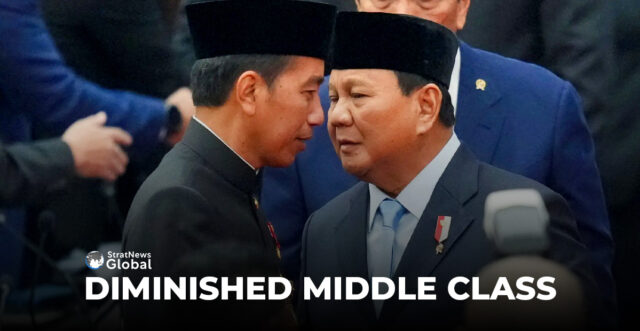Rahmat Hidayat lost his job when the shoe factory he worked for closed down
last year in the industrial town of Karawang in Indonesia’s West Java.
The 44-year-old now earns less than half of what he used to make by selling grilled meatballs. Unable to afford his wife’s diabetes medication, Rahmat picks herbs to make a tonic instead.
Like Rahmat, millions of working to middle class Indonesians have become poorer, largely due to an increase in layoffs and a drop in the number of job opportunities since the pandemic.
This trend bodes ill for the outlook for Southeast Asia’s biggest economy – household consumption accounts for over half of gross domestic product – as well as the widely held
investment thesis that an expanding middle class will drive Indonesia’s ambition to become a high-income nation by 2045.
It also poses a challenge for the incoming administration of President Prabowo Subianto, who won a February election by a landslide on promises to boost economic growth and create 19 million of jobs. Prabowo takes office on Oct. 20.
“Pushing the economy to grow higher with weak consumption is difficult,” said Mohammad Faisal, an economist at the Jakarta-based Center of Reform on Economics.
The government classifies those who spend between $132 to $643 a month as middle class, based on a World Bank criteria. This group is key to economic growth as their spending accounts for nearly 40% of private consumption, and more than 80% if
combined with the aspiring middle class, who spend $57 to $132.
The size of the middle class, however, has dropped from 21.5% of the total population in 2019 to 17.1% in 2024, according to official data released last month.
Even though Indonesia’s economy has bounced back after the pandemic, with growth of around above 5% a year since 2022 amid generally low inflation, this shrinking middle class is likely to pressure future growth, as the government will have to contend with lower tax revenues and a possibly more subsidies, said Jahen Rezki, an analyst from the University of Indonesia.
“In the long run, if the middle class dwindles, it will certainly be a big burden for the state,” he said.
With Reuters inputs
Thirty eight years in journalism, widely travelled, history buff with a preference for Old Monk Rum. Current interest/focus spans China, Technology and Trade. Recent reads: Steven Colls Directorate S and Alexander Frater's Chasing the Monsoon. Netflix/Prime video junkie. Loves animal videos on Facebook. Reluctant tweeter.





